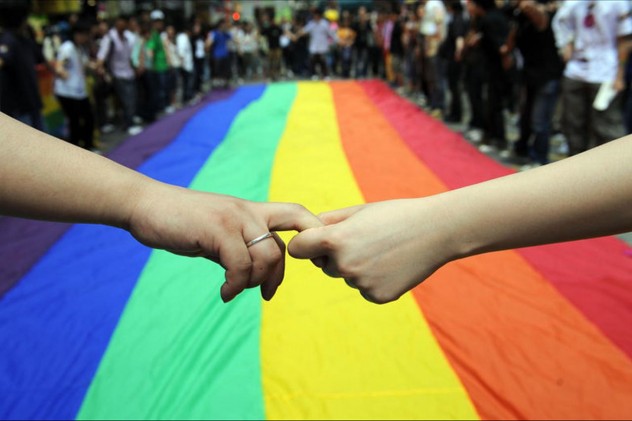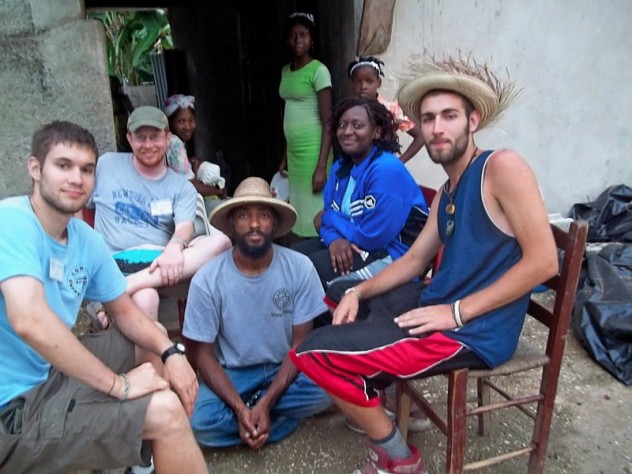 Miscellaneous
Miscellaneous  Miscellaneous
Miscellaneous  Animals
Animals 10 Strange Attempts to Smuggle Animals
 Travel
Travel 10 Natural Rock Formations That Will Make You Do a Double Take
 Movies and TV
Movies and TV 10 Actors Hidden in Your Favorite Movies
 Our World
Our World 10 Science Facts That Will Change How You Look at the World
 Pop Culture
Pop Culture 10 Incredible Female Comic Book Artists
 Crime
Crime 10 Terrifying Serial Killers from Centuries Ago
 Technology
Technology 10 Hilariously Over-Engineered Solutions to Simple Problems
 Miscellaneous
Miscellaneous 10 Ironic News Stories Straight out of an Alanis Morissette Song
 Politics
Politics 10 Lesser-Known Far-Right Groups of the 21st Century
 Miscellaneous
Miscellaneous 10 Undeniable Signs That People’s Views of Mushrooms Are Changing
 Animals
Animals 10 Strange Attempts to Smuggle Animals
 Travel
Travel 10 Natural Rock Formations That Will Make You Do a Double Take
Who's Behind Listverse?

Jamie Frater
Head Editor
Jamie founded Listverse due to an insatiable desire to share fascinating, obscure, and bizarre facts. He has been a guest speaker on numerous national radio and television stations and is a five time published author.
More About Us Movies and TV
Movies and TV 10 Actors Hidden in Your Favorite Movies
 Our World
Our World 10 Science Facts That Will Change How You Look at the World
 Pop Culture
Pop Culture 10 Incredible Female Comic Book Artists
 Crime
Crime 10 Terrifying Serial Killers from Centuries Ago
 Technology
Technology 10 Hilariously Over-Engineered Solutions to Simple Problems
 Miscellaneous
Miscellaneous 10 Ironic News Stories Straight out of an Alanis Morissette Song
 Politics
Politics 10 Lesser-Known Far-Right Groups of the 21st Century
10 Horrible Facts About Charities
Helping is a trillion-dollar industry. Despite the bad economy, there is never a shortage of altruistic souls willing to give money or lend a hand to disadvantaged children or for the cure of a disease. However, as noble as the idea of charity may be, there are some realities about charities that are not all puppies and rainbows. Both charity organizations and donors do things, intentionally or not, that hinder the very idea of helping.
We aren’t trying to discourage anyone from giving to charities, but you’d be silly to donate without an objective look at what goes on behind the scenes of charity work.
10 Trademark Bullying

We would most often associate aggressive, expensive, drawn-out trademark lawsuits with big commercial corporations. It turns out charities love those trademarks, too. While there is nothing wrong with protecting one’s intellectual property, Susan G. Komen and others definitely cross the line with their trademark bullying.
Apparently, breast cancer charity Komen owns the phrase “for the cure,” and this has been used noticeably by other non-profits like Kites for a Cure, Juggling for a Cure, and Kayaks for a Cure. We must note that these smaller organizations are also charities, meaning they exist to do good for others just like Komen does. It’s not a competition. If they’re all doing mankind a favor, Komen just lets it slide in favor of the betterment of humanity, right?
Nope. Susan G. Komen has filed legal action against hundreds of smaller charities that used campaigns even vaguely similar to their precious trademark. Even the use of ribbons or the color pink in line with charity activities was offending to Komen’s intellectual properties and was dealt with legally. Smaller charities would have to put a halt on more worthwhile charitable projects and pay legal fees using personal and donor money.
Another charity-slash-trademark bully is the Lance Armstrong Foundation, better known as LiveStrong, which spent $500,000 in 2010 alone suing countless organizations who used the words “live” or “strong.” These bigger charities are using sizable donor money, expected to be used on cancer research or similar activities, to fund legal action against smaller Samaritans who just happened to use the same color as they use.
9 Corporate Partnerships

Smaller companies may get bullied around, but when it comes to the larger ones, it’s not such a big deal. Apparently, charities aren’t so harsh when big corporations use their trademarks—so long as they put a few millions inside Komen’s purse, they’re all set to go pink and tack “for the cure” onto any irrelevant or incongruent product they have. A few years back, KFC released “Buckets for a Cure,” a joint campaign with Komen that aimed to raise awareness of breast cancer with the help of fried chicken and fast food. Obesity, a common result of fast food consumption, is actually contributory to cancer.
These suspicious partnerships are not exclusive to Komen. One of the World Wide Fund’s biggest corporate partners in environmental conservation is beverage producer Coca-Cola. One of the soft-drink giant’s biggest plants in India was involved a controversy a few years back for siphoning the scarce water from the country’s most drought-stricken areas, effectively un-conserving the local environment.
8 Hair Donations

We’ve all thought about donating hair to charity before. It just seems so bold having your well-maintained hair chopped down for a worthy cause. And while it takes some courage to have one’s head shaven or even just cut short, people are highly encouraged by the thought that their precious hair will be used by patients suffering from terrible diseases.
The sad thing, however, is that those patients most probably won’t. While Locks of Love, the biggest wig-making charity, receives 104,000 hair donations annually, 80 percent of those donations go to waste because they are simply too wet, too moldy, too gray, or too processed to be used. However, with the remaining 20 percent that is good, quality hair, they should be able to produce 2,080 wigs. And yet they only managed to produce 317 wigs, with 1,763 wigs (worth $6.6 million) unaccounted for in 2011.
To paint a clearer picture, the second-largest hairpiece charity, Pantene Beautiful Lengths, receives 65,000 hair donations annually and is able to create 3,500 wigs. That means they produce one wig for every 19 hair donations. It takes Locks of Love 328 hair donations to create a single wig.
7 Dictators

Many regimes attempt to sugarcoat themselves with false philanthropy, either to gain the trust of the populace or to appear nicer to the Western media. Sadly, some charities are more than eager to take the bait for cash, as did the Missionaries of Charity, Mother Teresa’s main organization when they received donations from Haiti’s Jean-Claude “Baby Doc” Duvalier. Baby Doc is one of the worst leaders of his time and has been recently charged with corruption and violations of human rights.
The human rights charity giant Sullivan Foundation, which has been backed by the likes of Hillary Clinton and Colin Powell, has also created ties with Equatorial Guinea’s three-decade dictator, Teodoro Obiang Nguema Mbasogo. The charity even allowed Mbasogo and his country to host its prestigious Sullivan Summit, a meeting of 4,000 influential politicians and artists, campaigning for human rights—despite the screaming allegations of torturing, killings, and other human rights violations in Equatorial Guinea.
6 CEO Salaries

We all imagine charity CEOs to be the Mother Teresa type: changing gauzes, feeding small children, and empowering volunteers. (Though it’s important to note that Mother Teresa wasn’t all that saintly.) And with that image, it becomes a little bit justifiable to pay charity CEOs six-digit figures if it is proportionate to the funding of the organization they manage. After all, charity is hard work and they also got bills to pay. However, many charity CEOs have been given unreasonably large raises while budgets for their projects are continuously dwindling. The average salary of charity CEOs is $132,739—not so large when we compare them to corporate CEOs but big enough to be trimmed for under-funded projects.
That number is pocket change, however, to what the recently resigned CEO of Susan G. Komen Nancy Brinker gets every year. Aside from five-star accommodations and private jet services, she got to bring home $648,717 during her capacity as CEO.
5 Homophobia

Good-willed charities do not mean tolerant charities. Many charitable organizations still refuse participation from other people because of their sexual orientation. Degrees of discrimination vary, from Catholic adoption charities refusing to place children with same-sex couples to the Salvation Army stating that “gay parents need to be put to death.”
Even charities that are not entirely faith-based, like Boy Scouts of America, are notoriously homophobic. The BSA has been reported to fire even long-serving and high-ranking BSA officials for things like vacationing at a gay resort. After 103 years of the organization’s existence, only recently did the BSA lift the ban on admitting gay teens in their scouting ranks, though gay adults will still remain behind the gates of scouting.
4 Volunteers Can Just Get In The Way

According to Charity Navigator, 64.3 million Americans (roughly 27 percent of the US population) volunteered for various causes in 2011. This saved the charity world $171 billion, a large sum that could be diverted to other projects such as housing and medical aid. Some smaller charities might even prefer time over money when discussing preferences on charitable donations, and millions would gladly oblige.
While volunteering is perhaps one of the best forms of charity, it also backfires at the cause more often than we think. After every severe earthquake, there are an estimated 50,000 unsolicited volunteers who try to help with the disaster relief. The number might have been more admirable if they weren’t more disruptive than helpful.
The thing is, unless you are a skilled worker who speaks a particular language or has a particular expertise, charities don’t want you there. Most often, volunteers who arrive at the scene of a disaster are ill-prepared and end up having to share relief goods with the people they wanted to help in the first place. Disaster experts say that the people who can help the most are probably the locals themselves. If you do insist on going, at least try to go with an organization that can coordinate with local needs and actually decide if they need you at all.
3 Terrorist Funding

Charities are one of the biggest financers of terrorist organizations. Some charities, innocently trying to sponsor a cause they believe in, end up being tricked into donating to the works of evil. Such is likely the case of an unsuspecting Saudi Arabian–Islamic charity that offered $2.7 million to an Afghan religious scholar so he could build a mosque, football fields, and a school in Quetta, Pakistan. When the charity checked on the progress of the project, there was no school, no mosque, and no Afghan scholar to be found. Though never proven, they suspect that their money might have been used to finance terrorism. It certainly wasn’t used to better the local infrastructure as it was intended to.
But some charities are less like victims and more like accomplices. Global Relief Fund, one of the largest Islamic charities in the US, was discovered to have close connections to Al-Qaida. Benevolence International Foundation, a Chicago-based charity, is reported to have supported Chechen terrorist activities in Russia, including the murder of 335 schoolchildren and parents in the Russian town of Beslan.
2 Animal Killings

We entrust our beloved critters to animal charities because they’re expected to take care of them and (obviously) not kill them. However, this isn’t the case with some large animal welfare charities. PETA, an extremely outspoken charity against animal abuse, is already quite controversial because of their nude protests and consumer boycotts. Behind them are an army of celebrities giving full support to PETA’s crusade against animal cruelty. They’ve been the staunchest, wildest opponents to any kind of animal mistreatment since the ’80s.
People may already expect a whole load of crazy from PETA, but they probably wouldn’t expect to hear that in 2011, PETA killed nearly 96 percent of the animals turned in to their headquarters. That’s 2,124 animals killed out of 2,216. At the same time, only seven of those animals were given up for adoption. In fact, in a span of 11 years, PETA has killed almost 30,000 domestic animals under their care. And these weren’t animals with terminal illnesses or debilitating conditions. Most of them were quite healthy.
The depressing thing is that PETA isn’t the only charity that does this. The Royal Society for the Prevention of Cruelty to Animals (RSPCA) killed 3,400 healthy animals in 2011. In the span of five years, the RSPCA killed a total of 46 percent of healthy animals under their care. Last January, they killed 43 sheep. But don’t worry! They made sure to take a photo of the occasion to help with campaigning on—you guessed it, animal welfare.
1 Corruption

What do people usually hope for when dropping a dollar inside the donation box? Some might wish that their hard-earned dollar can buy a family hot soup for the night. Or maybe a child in Mogadishu gets a new pair of slippers or learns some math. Very few would think that this dollar might be paving a charity executive’s road to riches.
A recently released expose concluded that as many as 50 large charities assign less than four percent of their funds to actual, charity-related activities. The remaining 96 percent of the donations they receive goes into the pockets of charity founders, operators, and solicitors. Kids Wish Network, a charity for dying children, has raised $125 million for the “cause.” Of that, $110 million went directly to solicitors and $4 million into the charity founder’s pockets.
These charities have been known to lie to donors, take multiple salaries, and arrange fundraising consultations that were schemed to benefit their bank accounts. In fact, they’re so deeply corrupted that they seem to mock the suffering of their supposed beneficiaries. An example is Cancer Fund of America, which had raised $100 million purportedly for the benefit of cancer patients, but then only gave useless trinkets, paper plates, and napkins to their dying recipients.
Asher B is currently in grad school to become a clinical psychologist. In his spare time, he watches lots of sitcoms and eats lots of ramen.








